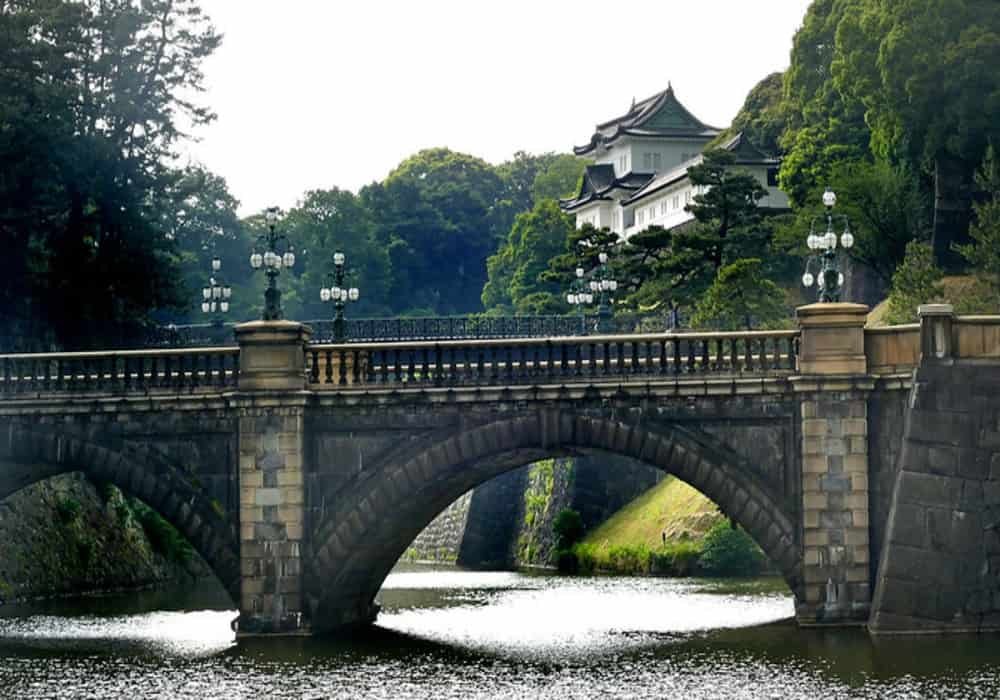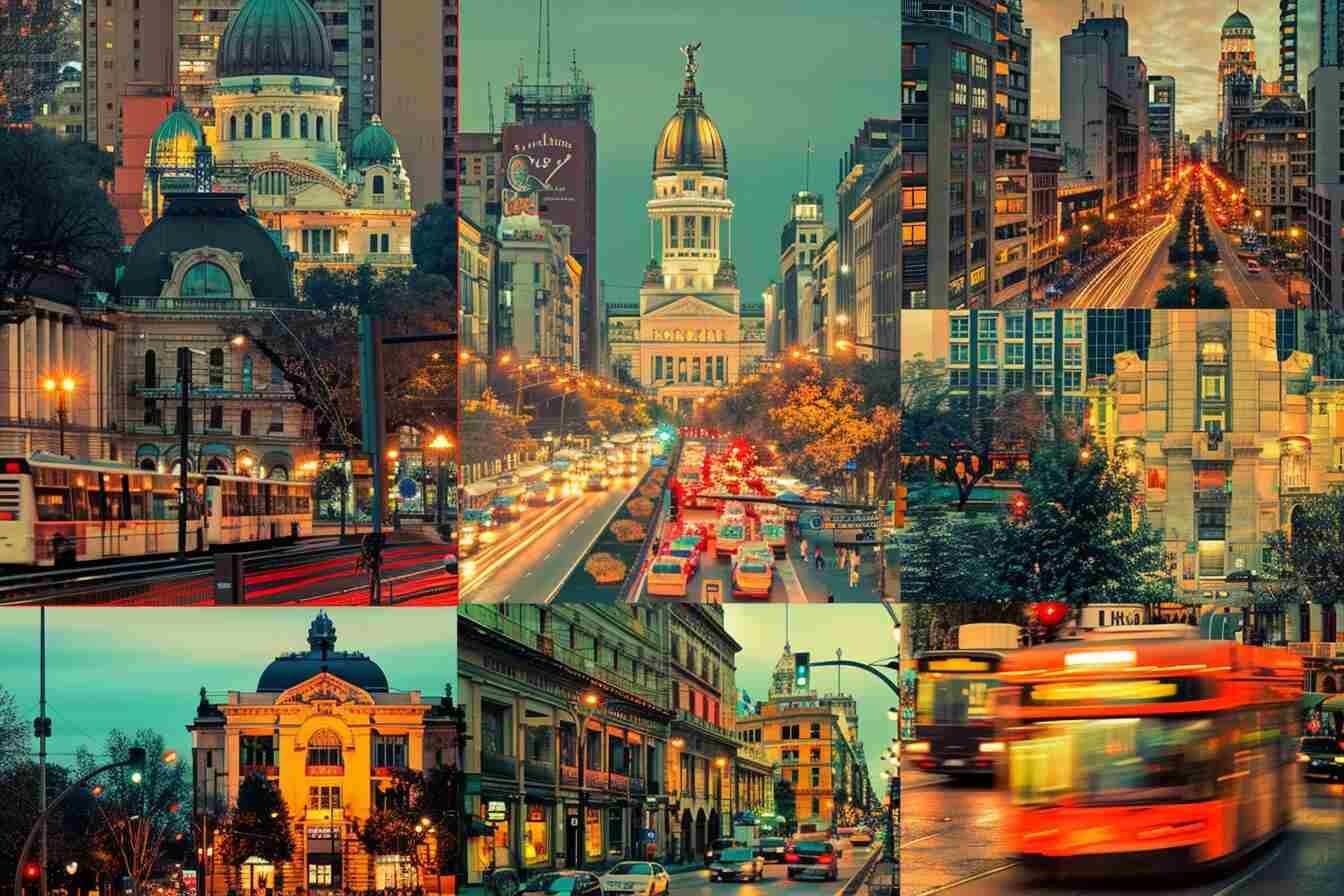Japanese Imperial Palace in Tokyo
Located in the special district of Chiyoda, the Japanese Imperial Palace in Tokyo was built on the ruins of Edo Castle which was destroyed by fire in 1873. Kokyo (Emperor’s Residence) is in the heart of Tokyo with 3 km² of gardens, surrounded by gardens and a river. The site also hosts the “Imperial Agency for the Administration of Internal Affairs”, as well as the Imperial Collection Museum.
The Tokyo Imperial Palace and its magnificent garden are a world apart, far from the hustle and bustle of the city. Just a 10-minute walk from Tokyo Station and the famous Marunouchi Financial District and its skyscrapers, this peaceful green oasis spans an impressive 1.15 km2 area in Chiyoda Central District. Built on the site of the old Edo Castle, the palace became the permanent residence of the imperial family in 1869. Although one cannot enter the palace except on rare special occasions which allow for glimpsing the interior, the surrounding perfectly mowed lawns, the well-trimmed trees and the carefully manicured garden are visually enchanting and give an idea of what the Imperial family embodies.
History
Originally known as Edo Palace, the place was the seat of the Tokugawa shogun who ruled over Japan from 1603 to 1867. In 1868, the shogunate was overthrown, and the country’s capital as well as the Imperial Residence. were transferred from Kyoto to Tokyo. It was in 1888 that the construction of a new Imperial Palace was completed. Today, these places are one of Japan’s most sought-after sites. During your visit, you will discover an expanse whose grandeur is matched only by its beauty.
In the 15th century, in Edo, the former toponym of Tokyo, a castle was built by Ota Dokan, a samurai and poet. The fortress later became the residence of members of the Hojo clan, then of the Tokugawa Ieyasu shogun who founded the Tokugawa dynasty. When the work of the third shogun Tokugawa Iemitsu was completed in 1636, the castle had 38 gates and the ramparts were over 20 meters high.
In 1701, the daimyo (nobiliary title) Asano Naganori attempted to kill the koke (nobleman of a lower rank than that of daimyo) Kira Yoshinaka in the Pine Corridor of the castle and was condemned to make himself seppuku (ritual form of male suicide by disembowelment), which triggered the vengeance of his servants, called the 47 ronin or 47 samurai. In 1867, the last shogun, Tokugawa Yoshinobu, relinquished power and left the fortress.
Difference between Emperor and King
Currently, the Emperor of Japan is the only Emperor remaining on the throne in the world. In a monarchy, an emperor and a king are both rulers, but the powers associated with them are different. They can be compared to regional directors and corporate CEOs. A kingdom can contain several kingdoms; The emperor ruled over the entire empire while the king (or queen) ruled over the smaller kingdoms of the empire. While the king (like a regional director) has full control over his territory, the emperor (like the CEO) is the one who makes the final decisions for the entire region.
Who lives in the Japanese Imperial Palace in Tokyo?
For centuries, the Imperial Palace has been the home of the ruling family of Japan. Today it is the official residence of the imperial family of Japan, and more specifically of Emperor Akihito and Empress Michiko. The Imperial Palace can almost be described as a world of its own, isolated from the rest of Tokyo. It is the place where traditional style buildings still exist, nestled among manicured lawns and vast rivers.

How to get to Japanese Imperial Palace in Tokyo?
Most of the heart of the palace complex is inaccessible to the public, with a few exceptions. Part of the precinct opens to the public only two days a year, on the Emperor’s birthday (currently February 23) and New Years (January 2). During these two days, the emperor and his family appear from the armored windows of the veranda of the Chowaden reception hall, to greet the crowd gathered in the square.
Inui Street (乾 通 り, Inui dōri), A 750-meter alleyway crossing the palace, is open to the public twice a year: in spring to admire the cherry blossoms (hanami), and in autumn for the leaf season. red (kōyō).
The Kōkyo is close to several Tokyo Metro stations, as well as Tokyo Station.
The Imperial Palace is so large that it is accessible by several different gates and metro stations.
The Otemon Gate is the most used, as it provides direct access to the eastern gardens. It is located a 5-minute walk from Otemachi Subway Station, or a 15-minute walk from Tokyo Station.
Closer to Kitanomaru Park, Hirakawamon Gates and Kita-hanebashimon Gates are a 5-minute walk from Takebashi Station on the Tozai Subway Line.
Guided tours
It is possible to take a guided tour of the palace. Usually, tours last about an hour and fifteen minutes. They take place from Tuesday to Saturday from 10 a.m. to 1:30 p.m.
You can book your visit in advance through the Imperial Household Agency or on the day of the visit at the Kikyomon Gate. Two hundred advance registrations are available and 300 places the same day. Tours are free and organized in Japanese and English.
On the guided tour, you can see Kikyomon Gate, Mount Fuji Guard Tower, Lotus Moat, Seimon Testubashi Bridge, and Fujimitamon Defense Gate. Please note that it is not possible to enter the interior of the buildings during the visit.
Access to the Imperial Palace Grounds
• To Sakashita-mon Gate
from subway Chiyoda Line Nijubashi-mae Station (Exit 6): 15-minute walk
from subway Mita Line Otemachi Station (Exit D2): 15-minute walk
from JR Line Tokyo Station (Marunouchi Central Exit): 20-minute walk
• To Kikyo-mon Gate
from subway Chiyoda Line Nijubashi-mae Station (Exit 6): 10-minute walk
from subway Mita Line Otemachi Station (Exit D2): 10-minute walk
from JR Line Tokyo Station (Marunouchi Central Exit): 15-minute walk
• To Ote-mon Gate
from subway Each Line Otemachi Station (Exit C13a): 5-minute walk
from subway Chiyoda Line Nijubashi-mae Station (Exit 6): 10-minute walk
from JR Line Tokyo Station (Marunouchi North Exit): 15-minute walk
• To Hirakawa-mon Gate
from subway Tozai Line Takebashi Station (Exit 1a): 5-minute walk
• To Kita-hanebashi-mon Gate
from subway Tozai Line Takebashi Station (Exit 1a): 5-minute walk
Sources: PinterPandai, Japan Guide, Go Tokyo



